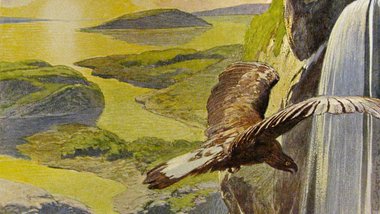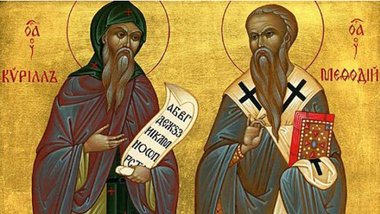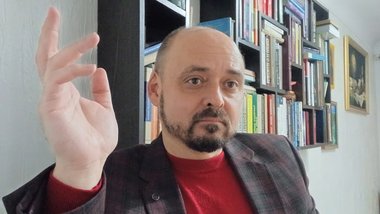Diaries and More Diaries
26.07.2012, 13:07
Reading these diaries takes us back into an age that still seems almost surreal: when the Soviet Union existed. How long ago that now seems, but what a time of darkness and endless suffering it was for so many Christians, Ukrainian Catholics especially, whose entire church was officially banned by Stalin and driven underground, all her bishops imprisoned or killed, and many others besides. The head of the church, Metropolitan Joseph Slipyj was sent with the other bishops to the Gulag, but was released in 1963 thanks in part to the Norman Cousins, John F. Kennedy, and Pope John XXIII.
Dr. Adam DeVille
 This year seems set to be a banner year for those diaries--and many other books besides--commemorating the 50th anniversary of the opening of the Second Vatican Council. First we had, of course, the sprawling, wonderful diaries of Yves Congar. I have not finished them by any means. I read portions as time allows, saving more for another time, much as one does not quaff but sips a Lagavulin or Talisker or Highland Park, any of which you would be welcome to send me at any time for any reason.
This year seems set to be a banner year for those diaries--and many other books besides--commemorating the 50th anniversary of the opening of the Second Vatican Council. First we had, of course, the sprawling, wonderful diaries of Yves Congar. I have not finished them by any means. I read portions as time allows, saving more for another time, much as one does not quaff but sips a Lagavulin or Talisker or Highland Park, any of which you would be welcome to send me at any time for any reason.
Now I have recently received from the publisher the following: Jaroslav Skira, trans., The Second Vatican Council Diaries of Met. Maxim Hermaniuk, C.Ss.R. (1960-1965) (Peeters-Leuven, 2012), 333pp. About this book the publisher tells us:
The Second Vatican Council diaries of the late Met. Maxim Hermaniuk, C.Ss.R., provide a captivating glimpse into the public and behind-the-scenes work of this Council Father. Hermaniuk was a graduate of the Catholic University of Louvain, and taught for a number of years in Belgium in the study houses of the Redemptorist order before being named the first Metropolitan of the Ukrainian (Eastern) Catholics in Canada. Hermaniuk was by far the most active of all the Ukrainian Catholic bishops at the Council. Much of his work was carried out through his membership in the Preconciliar Theological Commission and in the influential Secretariat for Christian Unity. Hermaniuk’s activities centred on his proposal to establish an Apostolic College, as well as his call to nullify the anathemas of 1054 between East and West. He was a strong advocate of ecumenical dialogue with other Christians, particularly with the Eastern Orthodox churches. His work also included the promotion of dialogue with other faiths. In reference to the Ukrainian Catholic Church, which was at the time severely persecuted in the Soviet Union, one sees his affirmations of the particularity and dignity of his Church, his promotion of religious liberty, and his condemnations of religious and political oppression. These diaries also reveal how the Ukrainian Catholic bishops responded to the pastoral needs of their faithful — in liturgy, catechesis, education, mission and ecclesial governance — and the call to renewal made by the Council. Finally, the diaries are unique since they are one of the very few accounts of the Council by an Eastern Catholic Council Father.As with the Congar diaries, these are a wonderful read, best savored over days and weeks to enjoy so many fascinating insights into the council, the Catholic Church at mid-century, Catholic-Orthodox relations, and the politics of the Cold War (inter alia). Skira has written a helpful introduction to the diaries and brief biography of Hermaniuk, who was not as well known as Congar, but was a very substantial personality in his own right. Born in Ukraine, and educated in Belgium, Hermaniuk became an accomplished biblical scholar whose early works are still cited in the literature. He was also a driving figure behind the council's decree on ecumenism and the Eastern Churches, as well as the recovery of the notion of collegiality; some have dubbed Hermaniuk the "father of collegiality." He was, as I noted in my Orthodoxy and the Roman Papacy: Ut Unum Sint and the Prospects of East-West Unity, rather critical of post-conciliar developments that did not allow for the full flourishing of synodality in the Catholic Church and a dampening of collegial efforts. Late in life, in the 1990s, he became editor-in-chief of Logos: A Journal of Eastern Christian Studies, of which I am now editor.
Reading these diaries takes us back into an age that still seems almost surreal: when the Soviet Union existed. How long ago that now seems, but what a time of darkness and endless suffering it was for so many Christians, Ukrainian Catholics especially, whose entire church was officially banned by Stalin and driven underground, all her bishops imprisoned or killed, and many others besides. The head of the church, Metropolitan Joseph Slipyj was sent with the other bishops to the Gulag, but was released in 1963 thanks in part to the Norman Cousins, John F. Kennedy, and Pope John XXIII.
It seems clear, especially from Hermaniuk's tone, that he and much of the rest of the Ukrainian hierarchy were out of sorts and did not know how to relate to Slipyj. This is not news to those who know the history, but it is somewhat startling to see that again and again there is a stiffness and awkwardness to Hermaniuk's tone when Slipyj is mentioned. For those who know the history, the Ukrainian Catholic Church from the 1960s until 1991 was suppressed in Ukraine, but flourished in North America, Canada especially. Bishops in these latter territories often had no connection to bishops in the underground, and ended up de facto leading the whole church, which was often said to be in some ways a surrogate for a free state of Ukraine. I'll have more to say about these fascinating diaries as I continue to explore them. They are at once a reminder of a world that is now gone--thank God--and yet of a Church in many ways still with us.









